#south and north dynasty
Text
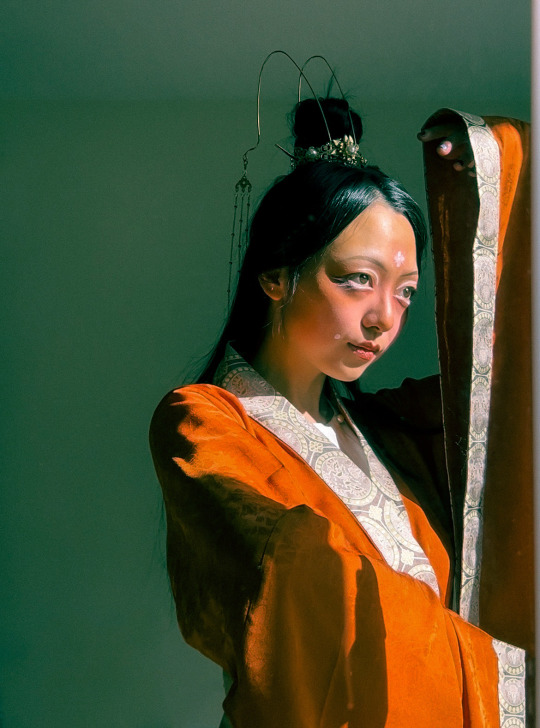
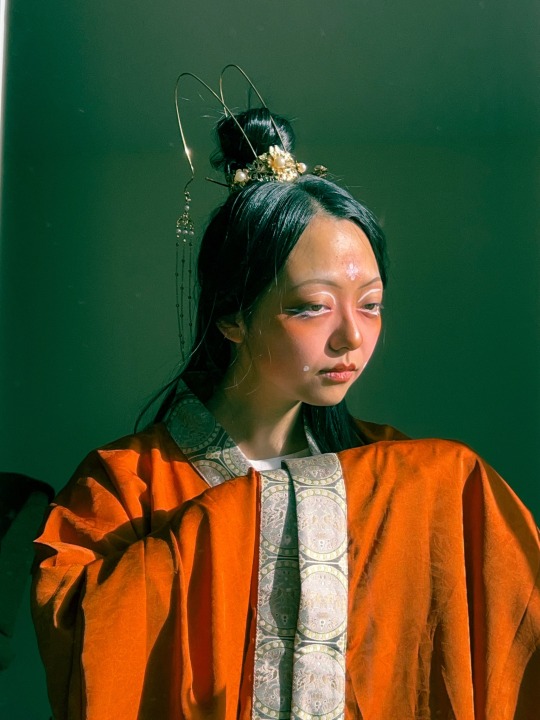
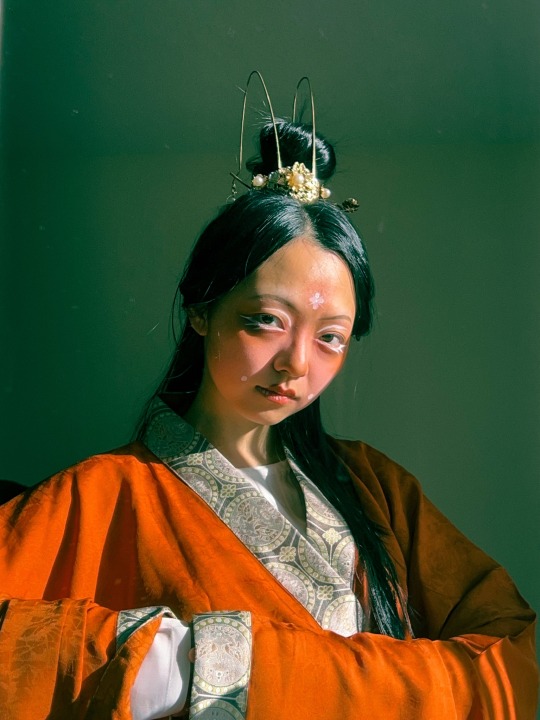
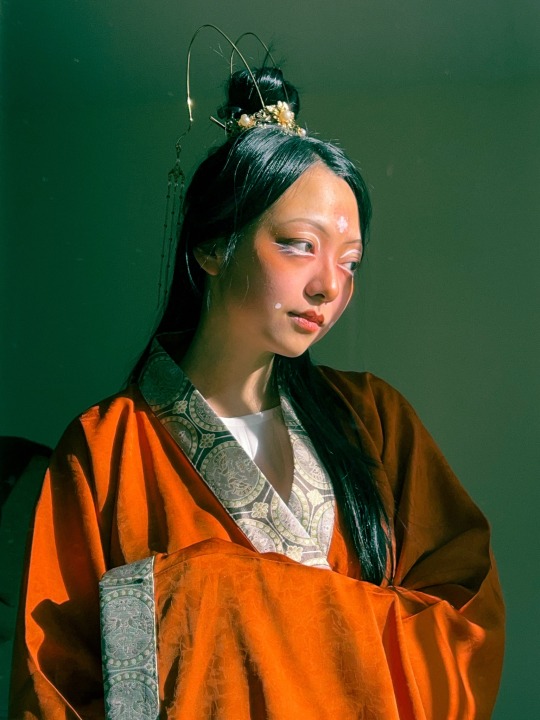
ᴛᴀᴋᴇ ᴍᴇ ᴛᴏ ᴛʜᴇ ʀɪᴠᴇʀ ᴀɴᴅ ʙᴀᴛʜᴇ ᴍᴇ ᴄʟᴇᴀɴ
以河水为予净身
#yovo does a face#chinese hanfu#hanfu fashion#南北朝#south and north dynasty#nanbei dynasty#historical fashion#your hanfu girl <3#Hanfu core#hanfu#汉服#aesthetic
49 notes
·
View notes
Text
more asoiaf comparisons, parallels & antiparallels to the first dance of the dragons vs the second & final dance of the dragons (& possibly the sixth blackfyre rebellion): the blacks being daenerys i targaryen's supporters, the golds being aegon vi targaryen's supporters, tommen baratheon being a close equivalent to gaemon palehair & his mother essie & sylvenna sand which may be interpreted as a parallel with queen cersei lannister & taena merryweather of myr, trystane truefyre being a close equivalent to aegon/young griff & perkin being jon connington & the shepherd being the new high septon the high sparrow, dalton greyjoy being euron i greyjoy's ancestor & the latter surpassing him, alyn waters later alyn velaryon resembling aurane waters later aurane velaryon & finishing what their ancestors started. history repeats itself.
#out of the galaxy. || ooc.#LIKE!!!! LOOK AT THE PARALLELS BRUH#it kinda makes me wonder who the hightowers would support this time...#its literally so wild how history repeats itself#i think the lannisters would support aegon after he takes king's landing bc they're lowkey fucked either way.#cersei lannister's probably either in hiding at casterly rock or will end up as aegon's political prisoner. maybe jaime too idk.#i have no idea who would lead the lannisters on the side of the golds now that kevan's dead killed by varys tho... maybe genna lannister?#cersei jaime & tyrion's aunt? to parallel johanna lannister who attacked the ironborn like a boss bitch??#i personally predict aegon'll marry sansa who would have the north the riverlands & the vale at her back—it'd be arranged by baelish & varys#i also think it's possible he'd take arianne martell as another wife to parallel aegon & his wives visenya & rhaenys.#so by taking sansa & arianne as his wives & queens both of whom are well beloved in their countries he'd restore honor to their houses.#bc aerys & later the baratheon dynasty was a terrible time for the starks & the martells so he brings the north & dorne back into the fold.#so by marrying sansa he honors & respects her given her past betrothal to joffrey & forced marriage to tyrion & mending what aerys did#particularly to her grandfather rickard stark & her uncle brandon stark & to her aunt lyanna stark.#& by marrying arianne he's restoring honor to house martell considering all the bs his mother elia martell experienced in king's landing.#(whether elia actually Is his mother or who he perceives her to be) & restoring the line of succession again in dornish hands#& they'd probably marry him on the condition that the northerners & dornish gets special rights & privileges that others don't.#& not to mention that the targaryens starks & martells have a common enemy.#polygamy's a big nono in the faith of the seven but that didn't stop aegon & his wives & im sure after everything w/ the faith rn??#w/ cersei & the sparrows?? & considering aegon's actually a decent person & he'll be foreshadowed to be popular & loved??#i don't think most would bat an eye tbh. i actually think daenerys would wanna talk to aegon first tho.#then everything & everyone around them goes to shit & they end up fighting bc like. daenerys wants SO BADLY to have a family.#so like i don't see her immediately perceiving aegon as a threat.#the starks & most of the north would prolly be wary of dany @ 1st due to aerys & having a MASSIVE army w/ three dragons until the long night#except for like. maybe jon. but anyway the martells could be slightly wary of dany bc of what happened with quentyn in meereen.#idk maybe there's a division in the north & dorne. i think sansa & arianne would actually get along personally.#anyway im presuming stannis is gonna be at the nightfort & i personally don't think he's ever gonna come south again. he'll die at the wall.
2 notes
·
View notes
Text
planning out a canon-complicit tgcf fic is so hard not only bc I have to be even stricter with remaining in-character and faithful to lore but also the physical setting itself. for example. ahem:
DID THEY HAVE BANANAS IN THE CENTRAL PLAINS?
LOOK AT--NO LOOK AT ME. LOOK IN MY EYES. WOULD ANYONE IN TGCF KNOW WHAT A BANANA IS. LOOK AT ME-
#hewwo#NOW. i do i have some non-exhaustive research into the HISTORICAL conditions of fruit in china during the different real life dynasties#for example. watermelon only showed up in ''china'' around 10th century onwards. before that it was mostly in the indian subcontinent#but what about bananas. what about other tropical fruits from farther south#DO THEY KNOW OF THE HUMBLE ATIS. THE DURIAN. THE LANGKA. THE ARATILIS#unfortunately they definitely won't have manchineels (north/south american fruit) so i can't use that. much as i wish to 🙄
10 notes
·
View notes
Text
Feng Shui and Chinese Geomancy: A Guide to a Better Life? - Historic Mysteries
Feng Shui and Chinese Geomancy: A Guide to a Better Life? – Historic Mysteries
https://www.historicmysteries.com/feng-shui/
View On WordPress
#4th century#5th century#Azure Dragon of the East#Balance#Black Tortoise of the North#China#Chinese Han dynasty#Feng Shui#Five Elemental Forces#Form Branch#Four Auspicious Beasts#Geomancy#Gnomon#Guo Pu#Neolithic Period#Qi#Taoism#The Book of the Burial#Vermillion Bird of the South#White Tiger of the West#Ying-Yang
0 notes
Text
A bit about Chuanqingren, one of the unofficial ethnic groups in China.
English added by me :)
Full video transcript below the cut:
Simply because these people are so rare, on cellphones and computers, there is no option to choose them. There’s no way to input them as an option.
As a result, often times when they go out, they will be questioned over having a fake ID. They’re not Miao, nor are they Han. And they’re certainly not any of the other 56 ethnic groups. In the 90s, they were designated as an unrecognised ethnic group (official designation). Their group is classified as Other. According to Ming Dynasty historical records, in earlier times, they were called “tu ren” (dirt people), “Li minzi” (~descendants of villagers), and also “xianmin”(羡) or “xianmin”(县) (~county people). Because their traditional clothing tends to be qing* colored (*may describe blue, green, or black), they’ve since been known as “chuanqing ren” (qing-wearing people). Early on, in the 1980s, there was already the write-in option of “qing group”. The first generation of resident IDs have “qingzu” printed on them.
Later, after many years of ethnic group discernment work, it was concluded that for the time being, they did not conform to China’s independent ethnic group determination standards. Therefore, they became recognised as “Chuanqingren”. Chuanqingren are mostly found in the northwest regions of Guizhou province. They use mandrills as their totem and their clothing tends to be qing. The qing color in question is a rather deep blue, one that near black.
There ware several explanations for the origins of Chuanqing people. One saying is that they are indigenous people of Guizhou. Another, more common explanation is that in the early Ming Dynasty, Yunnan’s king of Liang rebelled and Zhu Yuanzhang (Hongwu Emperor) dispatched 300k forces to consolidate the south. Then from south of the Changjiang, many immigrated to Guizhou and settled.
Historically it’s known as “transfer from the north, filling the south”, and Chuanqingren are simply the later generations of these soldiers and officers and immigrants to the south.
Now then the question comes: why are they only Chuanqing “people”, and not qing “ethnic group” or Chuanqing “ethnic group”?
Firstly, each ethnic group in our country has its own cultural/civilisation origins. For example, the Han ethnic group are the descendants of the Yellow Emperor and Flame Emperors. Therefore, they are also called “Yan Huang Zisun”(descendants of the Flame and Yellow Emperor).
Take for example the Miao ethnic group as well: The origins of the Miao ethnic group is that Chiyou led them in the alliance of the 9 Li tribes.
But Chuanqingren can’t find their origins. Most still simply say that they are a branch of the Han ethnic group. None of their special folk styles and customs have been completely preserved, including their language, which fewer and fewer of them are able to speak. Their clothing is even less common, which has led many to think that the clothing of the Tunpu people (another Han branch) of Anshun are that of Chuanqing people. As a result, many have taken Tunpu people as Chuanqing people.
In China, there are a lot of unique communities not within the 56 [official] ethnic groups. For example, the Mosuo people, the Kemu people, the Xia’erba people, the A’ke people, the Deng people, and more. The so-called “unrecognised” ethnic groups aren’t to say that their group’s identity can’t be distinguished. Rather, it’s that they still don’t meet our country’s criteria for judging independent ethnic groups. So, it’s only in order to reflect and affirm these unique communities that they are incorporated under the "not yet recognised” ethnic group.
In the multi-ethnic household of China, no matter which ethnic group, we all have a common name, and that is ”zhonghua minzu” (the people/nation of China). Do you identify with that? (Do you agree?)
927 notes
·
View notes
Text
Imperial Citadel of Thang Long Hanoi Vietnam
Imperial Citadel of Thang Long Hanoi Vietnam

View On WordPress
#Cao Bien Period#Chinese Sui and Tang dynasties (7th to 9th centuries)#Dai La Citadel#Dinh Dynasty#Dynasties Thang Long#French Colonialists Invasions 1873 and 1882#French Indochina Federation#General Van Tien Dung#General Vo Nguyen Giap#Hanoi#Hanoi Citadel 19th century. Main Gate (Doan Mon)#Hoang Dieu#Imperial Citadel Flag Tower#Imperial Citadel Kinh Thien Palace#Imperial Citadel North Gate#Imperial Citadel of Thang Long UNESCO World Heritage Site#Imperial Citadel Princess’s Pagoda (Hau Lau)#Imperial Citadel Royal Central Area#Imperial Citadel South Gate#Le Dynasty#Ly Dynasty#Mac Dynasty#Ming Dynasty#Nam Han Dynasty#Nguyen Dynasty#Nguyen Tri Phuong#Ninh Binh#North Gate (Bac Mon)#Quintessence of Tonkin#Revolutionary Historical Heritage House D67
1 note
·
View note
Photo
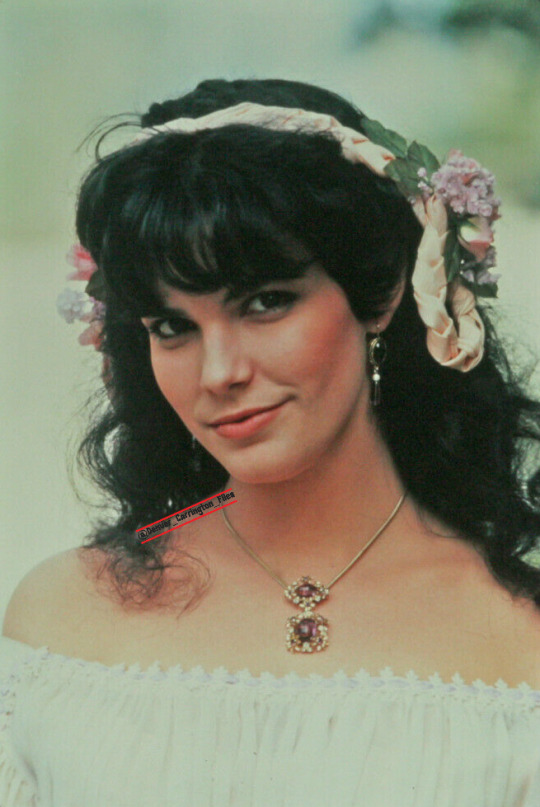
Promo of Terri Garber (Leslie) in North and South (1985).
1 note
·
View note
Text
a quick guide to dog lords, telling your arls from your teyrns, and generally how ferelden works

okay, this isn't quite what anon asked for, by which i mean not at all, but unfortunately they activated my interest in some of my favourite lore. it should hopefully contain a lot of the relevant stuff and i’ll try to branch out to less fereldan specific information in other posts!
okay, let’s start with the hierarchy. there’s four kinds of noble in ferelden
royalty: you know who these guys are. except for during the orlesian occupation, ever since ferelden became one kingdom, it’s been ruled by the theirin family. which i think is for 388 years, i really hope that’s right, i got out a calculator
teyrns: these are super powerful lords, basically banns so powerful that other banns swear fealty to them. they’re second only to the king, who is essentially just the most powerful one of them. there used to be a lot of them, but with one dynasty in power for so long, that kind of opposition has been eroded away. there are only two remaining: the couslands of highever in the north, and the mac tirs of gwaren in the south
arls: these are extra special banns. they answer to a teyrn or king and hold a strategic fortress for them. we know of six—amaranthine, south reach, denerim, redcliffe, west hills, and edgehall—but i’m unsure if that’s because they are only six or because there are unnamed others
banns: these are your common or garden noble, the lowest ranking and most common. this is your local lord type. they seem to vary the most in power, though, with some banns having big speaking roles in the landsmeet
but i kind of should have written that list in the opposite direction. what do i mean by that? well, in your standard medieval hierarchy, and in a lot of the rest of thedas, power comes down from the king, who lets you hold the land. but in ferelden, most of the land is owned by freeholders: commoners, well-off enough to own their land but still not by any means nobles.
how does that work? well, let’s say i’m a freeholder.
i own my land, but thedas is a rough place. if i want to keep my land, i’d better swear fealty to a bann. i’ll pay him a portion of the goods produced on my land, and in return, he’ll protect my land from anyone wanting to beat me up and take all my goods... and also, you know, not beat me up himself, as he probably would if i didn’t have any bann looking after me. it kind of sounds like he has all the power, right? like a medieval protection racket? it’s certainly how he gets his power and wealth
so i, freeholder harker, have signed up with bann jeff. it makes sense, because he’s the closest to my freehold, and i want soldiers to actually get here in time if i’m in trouble. that’s why my family has been swearing fealty to his family for generations. it’s just how things are done
but the thing is: i hate bann jeff. maybe he takes too much of my harvests, maybe he sides with a different freeholder when we go to him with a dispute, maybe his men don’t mind their pleases and thank yous when they come for my goods. i’m well within my rights to say fuck bann jeff and leave him. especially if there’s another bann nearby who would be perfectly happy to take my goods instead and treat me right. and the less freeholders bann jeff has, the less resources and men he has to make a fuss about it with. if bann jeff pisses off enough people, he might not have any freeholders left at all. and where will his wealth and power come from then? maybe soon he won’t be a bann at all
of course, bann jeff’s family might feud with the family of the bann that stole me away for a few hundred years. but that’s hardly my problem, is it? “courting” someone else’s vassals is apparently the biggest cause of conflict within the bannorn
anyway, this isn’t just how banns work; it’s how all power theoretically works in ferelden. there are no serfs/“unfree” men. every peasant has a right to go where he will and choose which freeholder he works for, just as every freeholder has the right to choose their bann, and banns who swear to teyrns can break away. (the latter is probably less common because a teyrn could fuck you up. i’m guessing you’d have to get the king’s backing about it to survive that.) and even the king answers to his lessers in the landsmeet, the super ancient gathering of nobles where law is made, which can override the king on any matter of law. (but they’re not going to do it if the king is really popular or powerful, because. you know. there’s a limit to all things called common sense and they would prefer not to get squashed about it.) but generally, everyone who holds power in ferelden has to curry favours with their so-called lessers in order to keep their goodwill.
everywhere else in thedas thinks this is weird as hell, by the way. having to court the approval of those beneath you? even the king having to do that? wtf? but the level of freedom means everything to fereldans. it’s their highest ideal and they’re really proud of it.
(the people who really don’t have a voice are what the ttrpg calls “low freemen”, which according to its handbook, consists of criminals, prostitutes, and elves. they still have the right to freedom of movement and to be paid for their work, but they’re not going to have freeholders and banns seeking their favour and speaking for them, and they typically have to resort to bribery for entrance to cities, their homes are bought and sold by others on a whim, things like that. ultimately it makes their position incredibly vulnerable to abuse, as we see in the games. i’m sure we’ve all played the tabris origin. there’s a reason the potential boon to get a bann for the alienage is so wild.)
so, let’s say you made it, everyone loves and/or tolerates you, and you’re a noble. what good does that do you and what can you do? firstly, you have a voice in the landsmeet, which is super important and means the king wants your goodwill and advice. more generally, you have three basic functions of a noble: raising taxes/tribute, commanding soldiers, and dispensing justice. nobles are expected to live off the wealth provided by their land and it would be hugely looked down on if they did work instead, with exceptions for, like, military careers and the chantry, which are respectable for their status. they raise militia from the commoners when necessary, and they also have trained soldiers or possibly knights (see postscript) in their service. that means you can protect your land and you can win glory and spoils when the kingdom goes to war, it also means you’ll be expected to provide those men when your liegelord calls for them. and lastly the law is their responsibility. remember how in the awakening dlc you had to make judgements as the arl of amaranthine? like that! the smaller scale you are, the smaller scale it’s going to be. in turn, if you want a dispute sorted by a higher power, you have to go up to your liegelord, maybe a teyrn or the king, or if you can’t get one of them, a more powerful bann or arl in the area. possibly the chantry would be an alternate option? if it’s just about finding someone you will both listen to, which is usually the main issue
some privileges other than the standard “power over those beneath you” that you can typically expect to belong to the noble class, even if it’s not specific to dragon age: the right to carry a sword, the right to have a coat of arms, the right to precedence on formal occasions and a special seat up front in your local chantry... sometimes niche ones, like fabrics and clothing that are only permissible to wear for people of a certain rank, so it distinguishes them. you can expect favours from/common class interests with your king, you would expect to be given a trial or treated chivalrously if things did not go your way, depending on era you might be captured for ransom in battle rather than killed outright, you probably have exemptions from certain royal taxation... etc. etc.
that’s what i have! i hope these are some helpful fundamentals and that anyone who has more knowledge than me on any aspect feels welcome to contribute it
P.S. as an aside, i’m a little confused about the fereldan use of knights. they definitely exist as lesser nobility, but i don’t understand how they fit into the hierarchy. a real knight was typically a vassal who held land from his liegelord and fought for him in exchange. i... don’t know how that works in the context of land ownership mostly going upwards. they’re definitely around, anyone addressed as ser is a knight, you have the knights of redcliffe and people like ser jory and ser cauthrien. (someone in an order like the templars has the rank of knight and gets ser and everything, but is not a noble.) as a rule of thumb i think generally they’re probably just members of noble families with that dedicated military training and no greater title to lay claim to? i’m basing that on stuff like nathaniel howe being sent as a squire to his mother’s cousin, a chevalier; if he’d completed that he probably would have been a knight unless/until he inherited his father’s place? i don’t know. i’m making this up. and on the other hand, there’s very little distinction in fereldan between your regular noble and a some kind of warrior class, which is why i struggle to see the purpose. (there are also inexplicable career soldiers who are not knights. what the hell is funding that upkeep and armour, buddy. you and whose land ownership? this is why you were fighting the darkspawn with your whole arms out, aveline. stop trying to imply ferelden has a standing army you can go off and join. yes i see you carver lore. i will not buy it.) ANYWAY, because knights are more prevalent in certain areas, i do wonder if it’s an import from the long orlesian occuption, based on the knightly order of chevaliers? i don’t fucking know. worth chewing on
#dragon age#ferelden#dragon age: origins#sorry to anon for asking specifically what your exact question was#and then going off on one anyway. that is my bad. if anything is not answered here let me know#and to anyone who has noticed the probably obvious things i missed pls be gentle#god this is so fucking long AGSHSJSKKS i thought i was being brief i dodged powerpoint... anyway#i just couldnt get to grips with what a noble can do until you know what different kinds there are and where there power comes from and.#well here we are
511 notes
·
View notes
Text
Abu al-Faraj al-Isfahani’s Kitab al-Aghani records the lives of a number of individuals including one named Tuways who lived during the last years of Muhammad and the reigns of the early Muslim dynasties. Tuways was mukhannathun: those who were born as men, but who presented as female. They are described by al-Isfahani as wearing bangles, decorating their hands with henna, and wearing feminine clothing. One mukhannathun, Hit, was even in the household of the Prophet Muhammad.
Tuways earned a reputation as a musician, performing for clients and even for Muslim rulers. When Yahya ibn al-Hakam was appointed as governor, Tuways joined in the celebration wearing ostentatious garb and cosmetics. When asked by the governor if he were Muslim Tuways affirmed his belief, proclaiming the declaration of faith and saying that he observes the fast of Ramadan and the five daily prayers. In other words, al-Isfahani, who recorded the life of a number of mukhannathun like Tuways, saw no contradiction between his gender expression and his Muslimness. From al-Isfahani we read of al-Dalal, ibn Surayj, and al-Gharid—all mukhannathun—who lived rich lives in early Muslim societies. Notably absent from al-Isfahani’s records is any state-sanctioned persecution. Instead, the mukhannathun are an accepted part of society.
...
Far from isolated cases, across Islamic history—from North Africa to South Asia—we see widespread acceptance of gender nonconforming and queer individuals.
- Later in the Ottoman Empire, there were the köçek who were men who wore women’s clothing and performed at festivals. Formally trained in dance and percussion instruments, the köçek were an important part of social functions. A similar practice was found in Egypt. The khawal were male dancers who presented as female, wearing dresses, make up, and henna. Like their Ottoman counterparts, they performed at social events.
- In South Asia, the hijra were and are third-sex individuals. The term is used for intersex people as well as transgender women. Hijra are attested to among the earliest Muslim societies of South Asia where, according to Nalini Iyer, they were often guardians of the household and even held office as advisors.
- In Iraq, the mustarjil are born female, but present as men. In Wilfred Thesiger’s The Marsh Arabs the guide, Amara explains, “A mustarjil is born a woman. She cannot help that; but she has the heart of a man, so she lives like a man.” When asked if the mustarjil are accepted, Amara replies “Certainly. We eat with her and she may sit in the mudhif.” Amara goes on to describe how mustarjil have sex with women.
...
Historian Indira Gesink analyzed 41 medical and juristic sources between the 8th and 18th centuries and discovered that the discourse of a “binary sex” was an anachronistic projection backwards. Gesink points out in one of the earliest lexicography by the 8th century al-Khalil ibn Ahmad that he suggests addressing a male-presenting intersex person as ya khunathu and a female-presenting intersex person as ya khanathi while addressing an effeminate man as ya khunathatu. This suggests a clear recognition of a spectrum of sex and gender expression and a desire to address someone respectfully based on how they presented.
Tolerance of gender ambiguity and non-conformity in Islamic cultures went hand-in-hand with broader acceptance of homoeroticism. Texts like Ali ibn Nasir al-Katib’s Jawami al-Ladhdha, Abu al-Faraj al-Isfahani’s Kitab al-Aghani, and the Tunisian, Ahmad al-Tifashi’s Nuz’ha al-‘Albab attest to the widespread acceptance of same-sex desire as natural. Homoeroticism is a common element in much of Persian and Arabic poetry where youthful males are often the object of desire. From Abu Nuwas to Rumi, from ibn Ammar to Amir Khusraw, some of the Islamic world’s greatest poets were composing verses for their male lovers. Queer love was openly vaunted by poets. One, Ibn Nasr, immortalizes the love between two Arab lesbians Hind al Nu’man and al-Zarqa by writing:
“Oh Hind, you are truer to your word than men.
Oh, the differences between your loyalty and theirs.”
...
Acceptance of same-sex desire and gender non-conformity was the hallmark of Islamic societies to such a degree that European travelers consistently remarked derisively on it. In the 19th century, Edward Lane wrote of the khawal:
“They are Muslims and natives of Egypt. As they personate women, their dances are exactly of the same description as those of the ghawazee; and are, in like manner, accompanied by the sound of castanets.”
A similarly scandalized CS Sonnini writes of Muslim homoerotic culture:
“The inconceivable appetite which dishonored the Greeks and the Persians of antiquity, constitute the delight, or to use a juster term, the infamy of the Egyptians. It is not for women that their ditties are composed: it is not on them that tender caresses are lavished; far different objects inflame them.”
In his travels in the 19th century, James Silk Buckingham encounters an Afghan dervish shedding tears for parting with his male lover. The dervish, Ismael, is astonished to find how rare same-sex love was in Europe. Buckingham reports the deep love between Ismael and his lover quoting, “though they were still two bodies, they became one soul.”
...
Today, vocal Muslim critics of LGBTQ+ rights often accuse gay and queer people of imposing a “Western” concept or forcing Islam to adjust to “Western values” failing to grasp the irony of the claim: the shift in the 19th and 20th century was precisely an alignment with colonial values over older Islamic ones, all of which led to legal criminalization. In fact, the common feature among nations with anti-LGBTQ+ legislation isn’t Islam, but rather colonial law.
Don't talk to me I'm weeping. I'm not Muslim, but the grief of colonization runs in the blood of every Global South person. Dicovering these is like finding our lost treasures among plundered ruins.
Queer folk have always, always been here; we have always been inextricable, shining golden threads in the tapestry of human history. To erase and condemn us is to continue using the scalpel of colonizers in the mutilation and betrayal of our own heritage.
#islam#queer muslims#queer history#lgbt history#colonization#colonialism#imperialism#world history#trans positivity#gay positivity#intersex positivity#queer poetry#queer love#queer art#islamic culture#lgbtqia#islamic history#global south#pinkwashing#islamphobia#colonial violence#queer erasure#arab culture#ottoman empire#hijra#wlw#mlm#knee of huss#same sex love#egyptian culture
619 notes
·
View notes
Text
The breast binding trend that young women are doing now has already been done by young women 100 years ago.
Read this excerpt from this paper about qipao fashion by Adrienne Cox:
The changes in qipao fashion began with the trend of breast binding in the early 1910s. Breast binding became more popular toward the end of the Qing dynasty, especially among young female students, who sought to hide their feminine figures by binding their breasts and wearing the early qipao that was stylistically similar to their male counterpart’s changpao style.
Breast binding provided young women with a slim boyish figure and allowed them to show off a more androgynous body as they began to move into the public sphere, which allowed them to preserve a sense of modesty. By hiding their feminine figures, they were able to enter the public sphere without drawing the attention of the male gaze as sexually promiscuous women. In the late 1910s, the trend of breast binding for political reasons quickly spread around urban China, and by the 1920s women of each province sported their own versions of breast binding devices. In the north near Beijing, the laoshi moxiong or old-style breast cover was popular and bound the breasts tight to the chest. In the south the xinshi moxiong or new-style breast cover was more popular and provided a slightly looser fit. From this trend of breast binding, we can also understand how women’s outer clothing changed to fit the new style of feminine form, as qipao styles became tighter to conform to the boyish figures.
The general practice of breast binding also points toward women’s desire to take control of their bodies as they are increasingly visible in the public eye. Women chose to bind their breasts as a way to make their body more suitable to the public eye, which then allowed them to take advantage of education and job opportunities that would bring them directly within the gaze of a society that had functioned by hiding female bodies for centuries. During this time period, who was in control of women’s bodies was the serious question. The changes in both breast binding and qipao styles provided women the opportunity to enter the public sphere without drawing the criticism of conservatives who felt women should stay within their traditional gender roles at home.
By the early to mid-1920s, another movement was beginning to gain traction that completely changed the way that women would display their bodies in public, as well as how the Nationalist government would respond to women’s political needs and demands. This movement began as some urban women sought to free their bodies from the constrains of their clothing as well as the constrains of traditional gender norms. These women sought to literally free their bodies from the historical bindings that had deformed women’s bodies. In this movement, breast binding became closely linked with rhetoric surrounding foot binding, which linked it to the feudal and restrictive past. Feminists across China called this the ‘natural curves’ movement, and it sought to completely eradicate breast binding and focused on women’s physical health. The movement was later supported by the Nationalist government after 1927, and women’s health was encouraged for the benefit of the state—healthy women could produce healthy children—but the way women dressed and presented their healthy bodies came under attack from the Nationalist government for being too provocative.
When the ‘natural curves’ movement began, the women involved focused primarily on celebrating women’s ‘natural’ curves and bringing the ‘natural’ female form more fully into the public eye. This would both literally free women from hiding their figures using harmful tactics such as breast binding, as well as figuratively freeing women from the traditional expectations that drove women to hide themselves from men. In the past, women had either been in the home or so overburdened by loose layered clothing that the physical form was ultimately hidden away from sight. The focus of the natural curves movement quickly became the breasts, hips, and legs of women, and women’s magazines such as Linglong devoted centerspreads and articles to showing off and celebrating the physical health of athletic women. In 1933, the editors of Linglong even published an entire issue dedicated to showing healthy and athletic women. Linglong was largely influenced by the readers, and it wasn’t uncommon for a reader’s letter or personal article to be published in the magazine. This is important to note, because the 1933 sports issue that showed women engaged in sports also included images of healthy young children and mothers holding their babies, which shows that women around China supported the movement for a variety of reasons.
The emphasis on healthy and robust bodies became the forefront of the natural curves movement, and this focus was embodied in the two keywords of the movement, ziran mei and jian mei which mean ‘natural beauty’ and ‘healthy beauty.’ Under the principles of ziran mei and jian mei, Chinese women began to abandon their xiongyi entirely to show off the full shape of their breasts. Others began to adopt the western style brassieres, which would cover the breasts without pushing them into the chest. Politically active women throughout urban China could decide how they wanted to express their liberation simply by how they chose to present their bodies, and qipao styles were changed once again, this time to show off women’s full figures. Once again, the qipao was used as a way to show the political stance of the women wearing them.
In the late 1920s the Nationalist government, as well as some conservative civilians supported ‘natural breasts’ and fashion that followed not out of a desire to liberate women, but out of concern for their reproductive health and creating a clear divide between genders. A popular magazine called The Women’s Monthly published an article that openly admonished young women who still bound their breasts, and other women’s magazines published articles encouraging women to abandon their old binders in favor of the western bra, that would support the breasts without constraining them. Breast binding was said to be a major detriment to a woman’s ability to raise her child, as it was widely accepted that breast binding caused women to be unable to produce milk. These groups linked what was supposed to be a form of female liberation back to the traditional gender roles that many women were trying to escape.
–
First there's a breast binding trend among young women who want to avoid being sexualized by male peers.
Then there's a feminist rejection of this trend as feminists promote the importance of women's health and fitness.
And finally, conservatives co-opt the feminist rejection and twist it into a promotion of traditional reproductive duties.
All of this happened 100 years ago.
And all of it is happening again today.
337 notes
·
View notes
Text
the atla universe if languages existed
hey there! ever wondered what avatar would be like if the nations actually spoke different languages? me too! here's my idea of how it would go:
(set during avatar: the last airbender, might add more during korra times another day)
quick disclaimer: i am an american who speaks american english and conversational france french. all of my language knowledge comes from youtube or school. this is just a silly little headcanon i needed to write down.
WATER
Within the water tribe’s language system, there are two main languages: Northern Water and Southern Water. Northern Water is spoken by the Northern Water tribe and Southern Water is spoken by the Southern Water tribe. Despite having similar names, the two languages are very different. When the Water tribes lived as one on the water lionturtle, they all spoke the same language (which we will call Olde Water), but after separation, they evolved independently. Think of the relationships between the two water languages as the relationship between French and Spanish. Their words can be similar (sol/soleil, luna/lune) because they share roots from Latin (or in this case, Olde Water). Northern Water and Southern Water share roots to the point where a Southern speaker and a Northern speaker would not be able to understand each other but could probably pick out a few key words from their speech. Similar words are things that are native to their area, while less common things that did not exist/were unknown during Olde Water times have differing words (the word for “polarbear-dog” is probably similar in both languages, but the word for “badgermole” is probably different). If the tribes met often for peace/community reasons (perhaps annually), then both languages would contain loanwords from the other tribe. For example, if sea prunes are a Southern Water tribe staple, then the word for “sea prunes” in the North is probably the same as it is in the South. Neither language has any sort of written component- it is completely oral.
Another, more niche language also exists within the Water language family, and that is Foggy Swamp. This language also originates from Olde Water, but has a great amount of Earth influence, since the swamp itself is in the Earth Kingdom (influence specifically from Omashu). Someone who speaks Olde Water would understand Foggy Swamp to the extent that someone who speaks American English would understand Pidgin English (that is, they would have to focus intently and would be able to get the jist of their speech). A Northern Water or Southern Water speaker would not be able to understand them at all, since their languages have developed so drastically from Olde Water. However, one could trace roots of words in Foggy Swamp back to Northern or Southern Water. An Earth speaker would not understand them at all either, but would be able to trace back loanwords and modern terminology (the word for “swamp” or “cat-gator”, for example, would be a lot more similar to Earth than it would be to Northern Water or Southern Water). Foggy Swamp also does not have a writing system.
EARTH
Because it covers such a vast space, the people of the Earth kingdom used to be incredibly linguistically diverse, with almost every city speaking differently than the next. During Kyoshi’s reign, Chin the Conqueror took over most of the kingdom and standardized the writing system (similar to the Qin dynasty in China), and therefore heavily influenced spoken language in the Earth kingdom. As an after-effect, Common Earth, also known as simply Earth, is the most widely spoken language in the world, to a similar extent as English or Mandarin Chinese. It is taught as a second language in every nation and it is hard to find a city where there are no Earth speakers. Everyone in the Earth kingdom speaks or understands Earth. Omashu Earth is an accent that is spoken primarily in the city of Omashu, and has tonal differences from Earth, similar to the difference between New York English and standard American English. Aside from Omashu Earth, the other areas of the Earth kingdom that were taken over by Chin do not have distinct accents. There are some slight variances, especially in the Southern islands between the Air temples, but all speakers of Common Earth can understand each other perfectly. Common Earth has a stable writing system that does not vary.
Despite Chin’s attempt to standardize language within the Earth kingdom, the places he did not conquer held fast to their respective languages. Ba Sing Se Earth, which can also be called Upper Ba Sing Se Earth, is the language that differs the most from Common Earth due to Ba Sing Se’s impenetrable walls cutting them off from the rest of the kingdom. Since both languages are derived from Olde Earth, they share similar writing systems, but neither language can understand each other (similar to the relationship between Cantonese and Mandarin). The walls between the Upper and Lower ring also created Lower Ba Sing Se Earth, where grammar is more simplified, due to the hasty lifestyle of a lower-class worker. Both Upper and Lower Ba Sing Se Earth speakers can understand each other, but Upper Ba Sing Se speakers might not be able to understand Lower slang. Their writing system is exactly the same. Kyoshi Earth is spoken solely on Kyoshi island, and is very similar to the former language of the people of Yokoya. It is not understandable to any other Earth speakers and functions similarly to the relationship between Japanese and Mandarin Chinese, with a different yet similar alphabet to Common Earth. The Si Wong tribes, who inhabit the Si Wong desert, speak various independent languages, but are collectively known as Si Wong Earth. Their languages have many loanwords from Common Earth due to trade. Their written language is syllabic and simple, similar to Cuneiform.
FIRE
Most of the Fire nation speaks the same language, but there are three main dialects within the Fire Nation language system. The most commonly spoken dialect is aptly named Fire, but is also known as Common Fire. This language is spoken within the Fire nation capital, Caldera, but is mainly used within the greater land mass of the Fire nation. It evolved from Olde Fire and is the most basic form of Fire nation speech. The most similar dialect is more of an accent with some different slang terms and is known as High Fire. It is spoken by the citizens of Caldera, especially the nobles. It is completely understandable to those who know Common Fire and vice versa. The relationship between the two languages is similar to the relationship between Canadian French and Quebecois. The main difference between High Fire and Common fire is pronunciation of words and tonal patterns within sentences and phrases. The last dialects all get looped into one group and are collectively known as Provincial Fire. Provincial Fire is spoken on the outskirts of the mainland and into the chain of islands off of the Fire nation. It varies greatly depending on what island or area of the mainland it is spoken in and has differences from Common Fire that are similar to Korean’s differences from its provincial dialects (speech pattern and tones, different slang terms). The further out one gets from Caldera, the stronger the dialect. Written language within the Fire nation is the same across all of the dialects and characters are similar to Mandarin Chinese as they are pictorial and syllabic (from canon).
The Sun Warriors are the only ethnic group of the Fire nation that speaks anything other than Common Fire. The Sun Warriors speak Sun Fire, which originates from Olde Fire as well, but has changed greatly since it was spoken within such a small group of people. Someone who speaks Common Fire would not understand Sun Fire at all, but could probably pick out a few words that have similar roots to Common Fire. Sun Fire has two written languages- one is reserved for spiritual leaders and spiritual texts, while the other is used by all people. Visually, it is similar to the differences between Japanese’s Kanji and Kana writing systems, where one is more simplified and one is more traditional. Spiritual written Sun Fire is more similar to written Common Fire.
AIR
The people of the Air nation only have one language: Air. Due to a high need of proper communication, as well as people constantly moving from temple to temple, or growing up at one and working at the other, Air nomads developed only a single language from Olde Air. Air nomads have a robust writing system to allow writing of incredibly complex ideas and air nomad journeys. Most nomads learn multiple other languages as they age, so they can succeed no matter where they find themselves in the world. Due to the destruction of the Air temples, Air is almost a completely lost language. Remaining speakers include Aang and his children, as well as a few Earth kingdom elders who learned the language from friends and passed it down to their children.
MISC.
Cities born out of the 100-year war, like Cranefish Town (Republic City), are another story. The Fire nation mandated that all colonies only speak Common Fire in hopes of destroying the culture of the city, but despite that, a hybrid language developed: Earthen Fire. To a non-speaker, Earthen Fire sounds like Common Fire, but the grammar structure is very Earth based (a Fire speaker can understand Earthen Fire in the way that a Dutch speaker can understand Afrikaans). It also incorporates many loanwords from Earth. The writing system involves the exact same characters as written Earth, so it almost sounds like Fire spoken with an Earth accent.
#atla#avatar#i hope someone actually reads this rant#avatar the last airbender#aang#sokka#katara#zuko#toph#suki#fire nation#water tribe#air nomads#earth kingdom#air temple#the legend of korra#tlok#korra#languages#etymology#polyglot#langblr#linguistics#worldbuilding#headcanon#atla headcanons#avatar headcanons#mega.exe#avatar languages#atla languages
326 notes
·
View notes
Text
The Snow P2
Media House Of The Dragon
Character Jacaerys Velaryon
Couple Jacaerys x Reader (Bastard Stark Girl)
Rating Sweet
Part One

Jacaerys remained in Winterfell for several days taking in the northern customs and sights even if most of it was mostly snow, he has made fast friends with Cregan Stark as his mother suggested he might. The two sat at a table in Winterfell's great hall, enjoying a flagon of mead each finally getting to the true meat of the discussion he had been sent here to discuss, they had been chatting about it intermittently during his time here but now was the real talks, they sat and discusses plans, oaths and the choices ahead.
Even if admittedly Jacaerys often glanced across the room to where Y/n sat in a beautiful silver dress that hugged her so perfectly and snugly his eyes often wonder to her, her eyes at times met his own which made him blush as admittedly her had an effort to appear more handsome tonight as he knew he would be seeing her. Over the days he had been here so far he had really grown interested in Y/n and he had a feeling she was interested in him too.
But he forced his attention back to Lord Cregan Stark,
“You’re mother wishes to start a war, with her own half-brother for the throne no less. Tell me… The Iron Throne and Kings Landing are thousands of miles away from the Winterfell walls, it would take a good two months to march an army down there and that’s without complications of the twins and any other issues in the Riverlands,” He explained, “Why should we involve ourselves in a war so far from our home? It makes no difference to us up here, so why should I risk my kin and my house in a war for who’s ass sits in a chair halfway around the world?” He asked,
Jacaerys nodded and he understood Cregan’s thoughts he had a good point and it was hard to disagree with him. The North could just stay out of this and be untouched by the war in the South, “You’re words have quite a bit of wisdom, but this war will not simply be contained beyond your borders, who sits on the throne will affect all of us from old town to the wall.” He explained, “And regardless your family swore to my mother, do your oaths not mean anything?”
“Oaths mean everything in the north,” He nodded, “There has never lived a stark who forgot an oath,”
“Then you cannot sit cosy in your castle while he sits on the throne.”
“But you see my concerns, by the time I walk my army down the war could be over. And what happens when we arrive at Kings landing in a war that's over, to fight for a side that lost? They would massacre us. And as much as our oaths are our law… you cannot expect me to allow my house, and the houses of my noble lords to be snuffed out,” He explained, “The Targaryen dynasty has already taken so much from us…”
“And he may take more from you still, you know your peace is my mother's greatest hope.”
“That is true, we do not know the man this king will be. But your mother… we know her ways and means, she is her father's daughter and her father was a man of peace and understanding.”
“Sometimes the best way to peace, is war.”
“Let us talk no more of it tonight,”
“Of course,” Jacaerys nodded, “May… My lord may I speak of something else?”
“Go on,” Cregan nodded sipping his drink,
“May I ask… about your kin?”
“Oh?”
“Y/n specifically,”
“She is a snow. But she is my sister. My blood. No matter what the laws of this land are she is my sister.”
“That is Honourable of you,”
“You know… there are rumours I have heard about your family-”
“It is… lies.” Jacaerys lied, he knew the truth but he knew best not to speak of it,
“Lies?” Cregan nodded with a smile, “What is your question in regards to my sister?”
“... Is she promised?”
Cregan snickered, “Why?”
“I… I admit, I have… I have caught her in my eyes and I would like to ask permission to court her,”
“you think you are the first to ask me that? I have been buried under marriage proposals for my sister. You are not the first nor will you be the last to ask to court her. The answer to you is the same as the answer to the rest I will not allow anyone to court Y/n. If a man wishes her hand he will bring a proposal and I'll wed her to the best proposal I am given.”
"So, then the question now is… what kind of proposal is sufficient for you?"
“I will make you a deal. We will join your mother's war the Starks and all the banners of the north with be on the side of her crown we will keep our oaths and back her. And as payment for all this war will cost us. And when your mother's ass is sat on that throne you will be her heir, so you will marry Y/n and have a stark as your queen,”
“I… I…” he stuttered, he knew this was a big thing to promise, the hand of an heir to the throne is not something to be given away so likely but he knew he had to return to his mother with the Starks alliance and… he wanted to return with Y/n in his arms,
"You drive a hard bargain, my Lord. Is this your full request?"
"it is. And when she gives you a son stark blood will be your heir. I will legitimise my sister and wed her to you in the godswoods and our oath, and alliance will be set as your vows.”
“You will support my mother, march to war with us, spill blood for us. And you will wed me your sister?” Jaracerys asked, “You give me your word in this?”
“You have my sworn word,” He offered his hand.
"Then, I accept your deal, my Lord, on the condition that she too agree to this proposal." he took this hand and shook it.
#jace velaryon#jace x reader#jacaerys smut#hotd jacaerys#jacaerys x reader#prince jacaerys#jacaerys targaryen#jacaerys velaryon#house targaryen#houseofthedragon#house of the dragon#house of the dragon jace#house of the dragon jacaerys#hotd x reader#hotd smut#hotd fanfic#hotd#hotd jace
64 notes
·
View notes
Photo

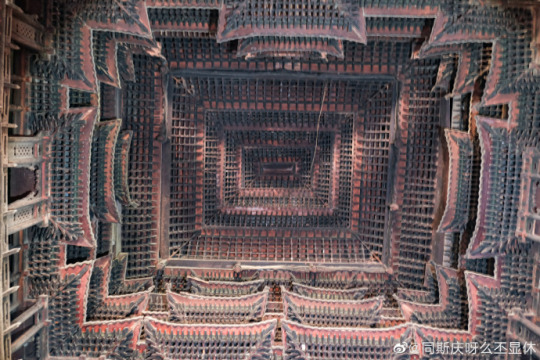


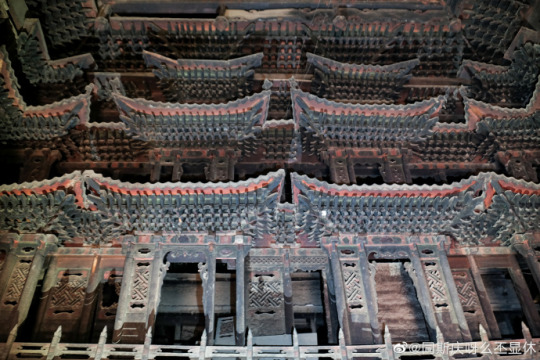
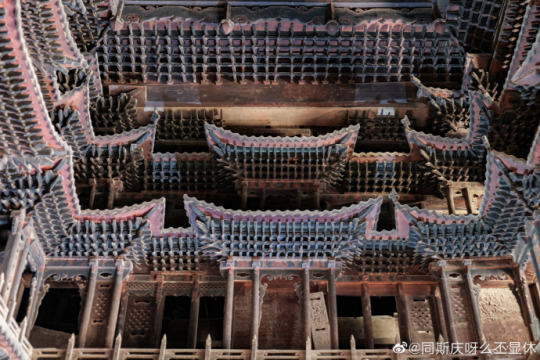
Gongshutang Temple (公輸堂) with its unforgettable cosmological ceiling. Just a small temple in the rural outback in Huxian County (戶縣), Shaanxi, in Qinan village (祁南村). The locals even barely remember its name.
The Gongshutang Temple, originally called Yuanyuantang (源遠堂), also known as Wanfotang (萬佛堂) was built in the Yongle period of the Ming Dynasty, facing south from the north. It was erected by the followers of the “Baiyang Sanhui” (白陽三會) movement to commemorate their legendary ancestor-founder Lu Ban (魯班).
From the very beginning, Gongshutang was a large-scale temple complex. Nowadays only the main hall exists with a building area of 106 square meters. Referring to the folk religion, the temple is conceived to worship the amalgam of the Taoist and Buddhist pantheons.
Photo: ©同斯庆呀么丕显休
#ancient china#chinese culture#chinese architecture#ming dynasty#yongle period#ming#wooden architecture#wooden buildings#wooden temple#old china#taoism#taoist#buddhism#buddhist#chinese folk religion#chinese temple#公输堂#temple ceiling#temple architecture
330 notes
·
View notes
Text

Legends of the humanoids
Reptilian humanoids (4)
Five Dragon Kings – the Five Coloured Dragons with Directions in ancient Chinese belief
Historically there arose a cult of the Five Dragon Kings in Chinese legend based on Wuxing (5 elements, Nature Philosophy on Taoist cosmology). The name Wufang longwang ( "Dragon Kings of the Five Regions/Directions") is registered in Taoist scripture from the Tang dynasty, found in the Dunhuang caves, also be known as the Magao caves.
Incorporating elements of traditional Chinese beliefs, the Five Elements, it associates the Five Dragon Kings and the five coloured dragons with the five directions. In the east, there is the Blue Dragon God King, who has 49 Dragon Kings under his command, who control 70 myriad myllion small dragons, mountain spirits and sundry charms. The document states that it is the work of the small dragons and spirits under the control of the Dragon King that cause poison and disease to people, and that they should pray to the Dragon King who oversees them for healing. The Red Dragon God King is located in the south, the White Dragon God, the White Dragon God King in the west, the Black Dragon God King in the north and the Yellow Dragon God King in the centre, each with a considerable number of Dragon Kings, countless small dragons and charmed demons.
The Azure Dragon or Blue-Green Dragon (Qīnglóng), or Green Dragon (Cānglóng), is the Dragon God of the east, and of the essence of spring. The Red Dragon (Chìlóng or Zhūlóng, literally "Cinnabar Dragon", "Vermilion Dragon") is the Dragon God of the south and of the essence of summer. The White Dragon (Báilóng) is the Dragon God of the west and the essence of autumn. The Yellow Dragon (Huánglóng) is the Dragon God of the center, associated with late summer. The Black Dragon (Hēilóng), also called "Dark Dragon" or "Mysterious Dragon" (Xuánlóng), is the Dragon God of the north and the essence of winter.
[Image bottom: One of the Buddha statues in Mogao Caves, China]

伝説のヒューマノイドたち
ヒト型爬虫類 (4)
五方龍王 〜 古代中国の信仰における五方位に結びつく五色の龍王
歴史上、中国の伝説には五行(5つの要素) に基づいた「五方龍王信仰」があった。敦煌石 (莫高窟) で発見された唐代の道教経典には、「五方龍王」という名前が記されている。
中国の伝統的な信仰の要素である五行 (道教の宇宙論に基づく自然哲学) を取り入れ、五龍王と五色の龍を五つの方角と関連付けている。東方には青龍神王がおり、配下に49の龍王をしたがえ、それらが70万億の小龍や山精・雜魅を従えている。この文書の趣旨は、四方八方どこにでも、人間を毒や病に侵す龍王の手先がいて、彼らの主である龍王に救済を祈り求めなければならないということだ。南方には赤龍神王、西方には白龍神王、北方には黒龍神王、中央には黄龍神王がおり、同様にそれぞれ相当数の龍王、無数の小龍、魅鬼などが配置される。
蒼龍または蒼緑龍(靑龍)、または緑龍(蒼龍)は、東の龍神であり、春の本質を表す。赤龍(辰砂龍 または 朱龍)は南の龍神で、夏の神である。白龍は西の龍神であり、秋の神である。黄龍(黃龍)は中央の龍神で、晩夏に関連している。黒龍(黑龍)は「暗龍」または「神秘龍(玄龍)」とも呼ばれ、北の龍神であり、冬の精髄である。
#humanoids#legendary creatures#hybrids#hybrid beasts#cryptids#therianthropy#legend#mythology#folklore#s.f.#nature#art#taoism#yin yang#chinese mythology#taoist cosmology#wuxing#5 dragon kings
118 notes
·
View notes
Text

The Ghaxgø descend from peoples who were semi-nomadic and hunted and cultivated in the southern river valleys of the Kantishian Mountains. They were conquered, forcibly settled, and partially assimilated by the Ghøwout, but remained problematic provinces of the Empire until the end of 5th dynasty, when the Ghaxgø peoples freed themselves from the Ghøwout. Ghaxgø culture retains a lot from its time in the Empire, from borrowed words to the tailoring of their clothes.
[Text from the image:] They are, according to their neighbors, the least civilized of Ghøwout's children, wearing pelts and hunting like the "barbarian" Am-Wiek tribes and kingdoms to the North. Conquered late in Ghøwout's history and never fully tamed, the Ghaxgø were among the first to free themselves of the failing empire. They have returned to semi-nomadic ways and rely on a mixed economy of summer agriculture and winter hunting and fishing. The Ghaxgø are proficient lumberjacks and trade timber for tin to the Ghøwout Empire to the south and the Oubixwø-Oi living in the mountains and plateaus above the treeline. Although the Ghaxgø lack tin to make their own bronze, they remain expert metalworkers, working iron as well.
#worldbuilding#antiole world#antiole fashion#peoples of uanlikri#ghaxgo#ghaxgø#mountainfolk#we've moved far enough north that we're starting to see mountainfolk instead of southfolk! but we'll come back to the southfolk shortly#took me forever to get another one of these out simply bc i couldn't decide what item i wanted to do with them#art by me
57 notes
·
View notes
Text
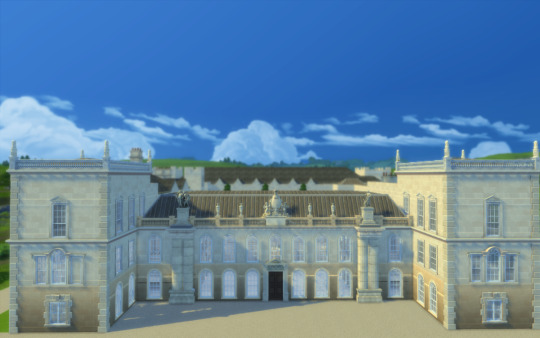

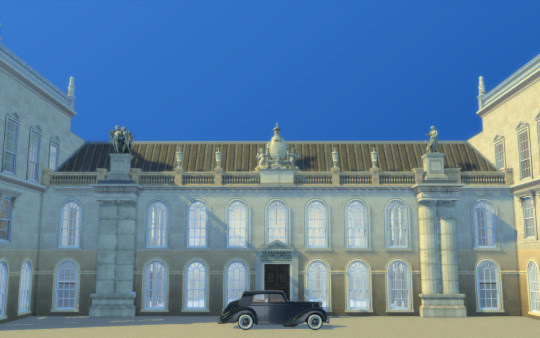
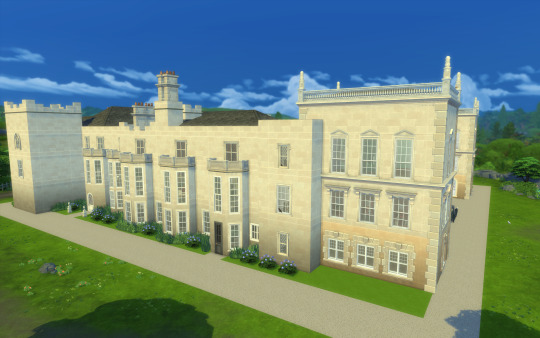
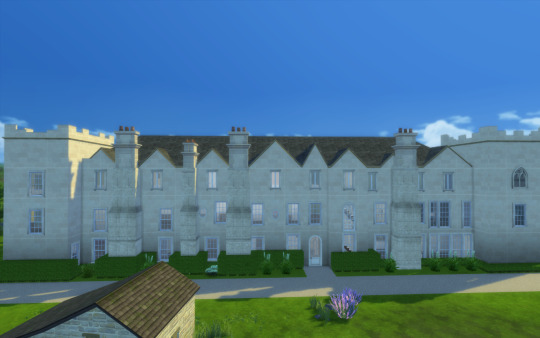
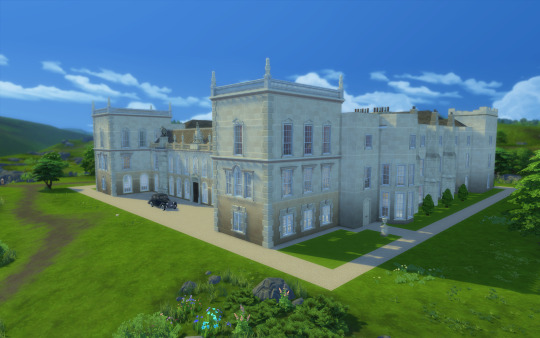
Grimsthorpe Castle
Hi guys!!
I'm sharing another grand english state!
House History: The building was originally a small castle on the crest of a ridge on the road inland from the Lincolnshire fen edge towards the Great North Road. It is said to have been begun by Gilbert de Gant, Earl of Lincoln in the early 13th century. However, he was the first and last in this creation of the Earldom of Lincoln and he died in 1156. Gilbert's heyday was the peak time of castle building in England, during the Anarchy. It is quite possible that the castle was built around 1140. However, the tower at the south-east corner of the present building is usually said to have been part of the original castle and it is known as King John's Tower. The naming of King John's tower seems to have led to a misattribution of the castle's origin to his time.
Gilbert de Gant spent much of his life in the power of the Earl of Chester and Grimsthorpe is likely to have fallen into his hands in 1156 when Gilbert died, though the title 'Earl of Lincoln' reverted to the crown. In the next creation of the earldom, in 1217, it was Ranulph de Blondeville, 4th Earl of Chester (1172–1232) who was ennobled with it. It seems that the title, if not the property was in the hands of King John during his reign; hence perhaps, the name of the tower.
During the last years of the Plantagenet kings of England, it was in the hands of Lord Lovell. He was a prominent supporter of Richard III. After Henry VII came to the throne, Lovell supported a rebellion to restore the earlier royal dynasty. The rebellion failed and Lovell's property was taken confiscated and given to a supporter of the Tudor Dynasty.[2]
The Tudor period
This grant by Henry VIII, Henry Tudor's son, to the 11th Baron Willoughby de Eresby was made in 1516, together with the hand in marriage of Maria de Salinas, a Spanish lady-in-waiting to Queen Catherine of Aragon. Their daughter Katherine inherited the title and estate on the death of her father in 1526, when she was aged just seven. In 1533, she became the fourth wife of Charles Brandon, 1st Duke of Suffolk, a close ally of Henry VIII. In 1539, Henry VIII granted Charles Suffolk the lands of the nearby suppressed Vaudey Abbey, founded in 1147, and he used its stone as building material for his new house. Suffolk set about extending and rebuilding his wife's house, and in only eighteen months it was ready for a visit in 1541 by King Henry, on his way to York to meet his nephew, James V of Scotland. In 1551, James's widow Mary of Guise also stayed at Grimsthorpe. The house stands on glacial till and it seems that the additions were hastily constructed. Substantial repairs were required later owing to the poor state of the foundations, but much of this Tudor house can still be seen today.
During Mary's reign the castle's owners, Katherine Brandon, Duchess of Suffolk (née Willoughby) and her second husband, Richard Bertie, were forced to leave it owing to their Anglican views. On Elizabeth's succeeding to the throne, they returned with their daughter, Susan, later Countess of Kent and their new son Peregrine, later the 13th Baron. He became a soldier and spent much of his time away from Grimsthorpe.
The Vanbrugh building
By 1707, when Grimsthorpe was illustrated in Britannia Illustrata, the 15th Baron Willoughby de Eresby and 3rd Earl Lindsey had rebuilt the north front of Grimsthorpe in the classical style. However, in 1715, Robert Bertie, the 16th Baron Willoughby de Eresby, employed Sir John Vanbrugh to design a Baroque front to the house to celebrate his ennoblement as the first Duke of Ancaster and Kesteven. It is Vanbrugh's last masterpiece. He also prepared designs for the reconstruction of the other three ranges of the house, but they were not carried out. His proposed elevation for the south front was in the Palladian style, which was just coming into fashion, and is quite different from all of his built designs.
The North Front of Grimsthorpe as rebuilt by Vanbrugh, drawn in 1819. Vanbrugh's Stone Hall occupies the space between the columns on both floors.
Inside, the Vanbrugh hall is monumental with stone arcades all around at two levels. Arcaded screens at each end of the hall separate the hall from staircases, much like those at Audley End House and Castle Howard. The staircase is behind the hall screen and leads to the staterooms on the first floor. The State Dining Room occupies Vanbrugh's north-east tower, with its painted ceiling lit by a Venetian window. It contains the throne used by George IV at his Coronation Banquet, and a Regency giltwood throne and footstool used by Queen Victoria in the old House of Lords. There is also a walnut and parcel gilt chair and footstool made for the use of George III at Westminster. The King James and State Drawing Rooms have been redecorated over the centuries, and contain portraits by Reynolds and Van Dyck, European furniture, and yellow Soho Tapestries woven by Joshua Morris around 1730. The South Corridor contains thrones used by Prince Albert and Edward VII, as well as the desk on which Queen Victoria signed her coronation oath. A series of rooms follows in the Tudor east range, with recessed oriel windows and ornate ceilings. The Chinese drawing room has a splendidly rich ceiling and an 18th-century fan-vaulted oriel window. The walls are hung with Chinese wallpaper depicting birds amidst bamboo. The chapel is magnificent with superb 17th-century plasterwork.
More history: https://en.wikipedia.org/wiki/Grimsthorpe_Castle
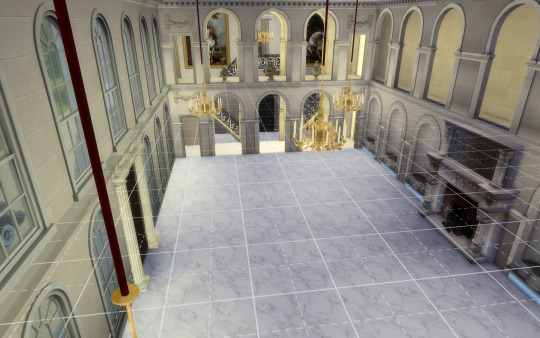



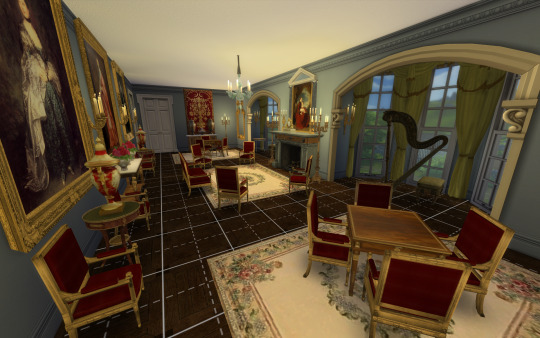
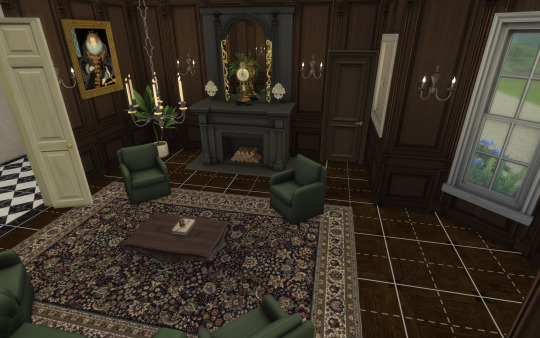
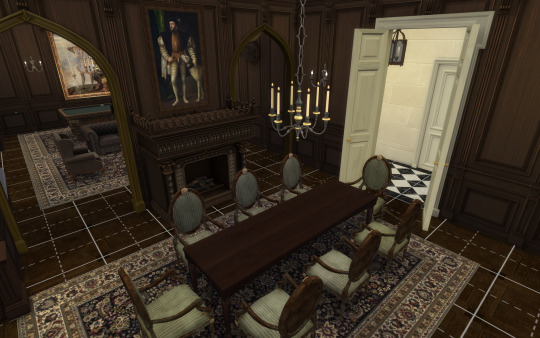
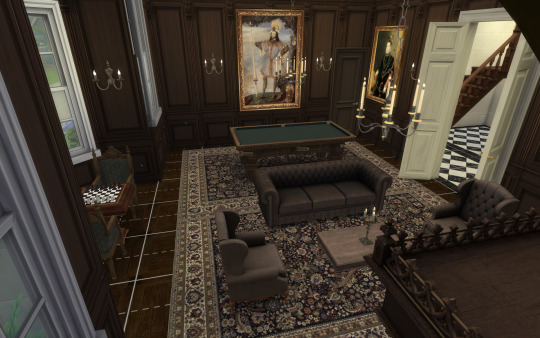


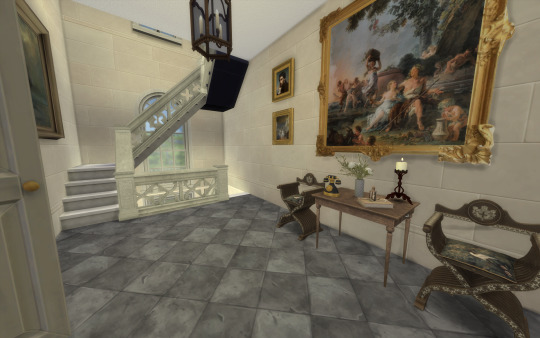
This house fits a 64x64 lot and features several impressive rooms, more than 29 bedrooms, a servants hall and several state rooms!
I only decored some of the main rooms, for you to have a glimpse of the distribution. The rest is up to you, as I have stated that I do not like interiors :P
Be warned: I did not have the floor plan for the tudor rooms, thus, the distribution is based on my own decision and can not fit the real house :P.
You will need the usual CC I use: all of Felixandre, The Jim, SYB, Anachrosims, Regal Sims, TGS, The Golden Sanctuary, Dndr recolors, etc.
Please enjoy, comment if you like it and share pictures with me if you use my creations!
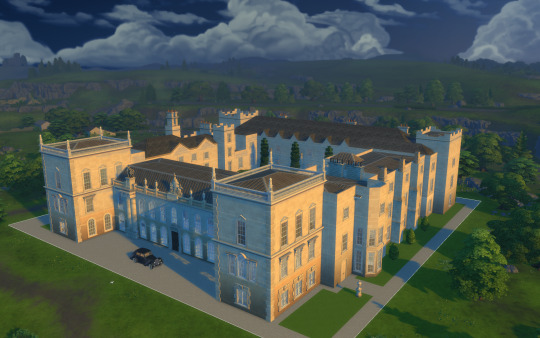
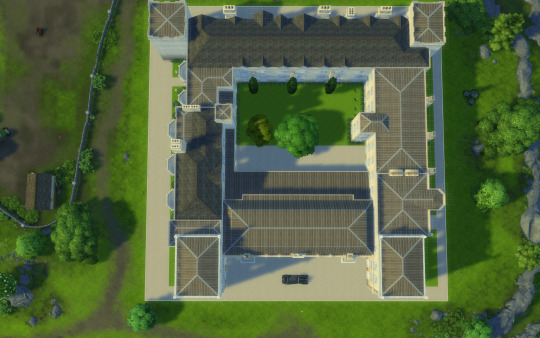
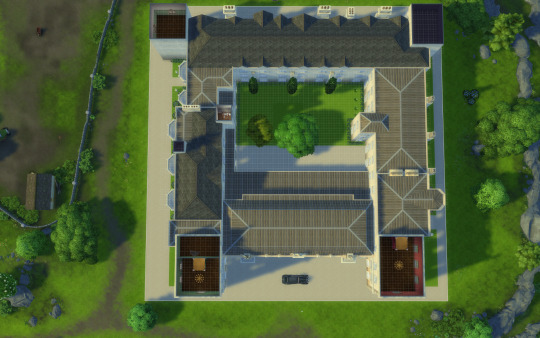
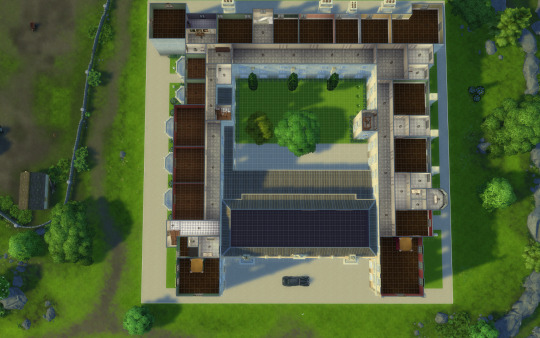

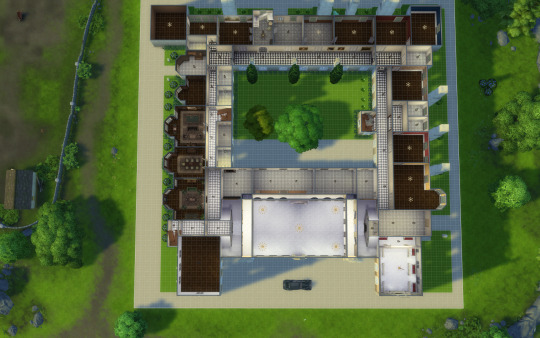
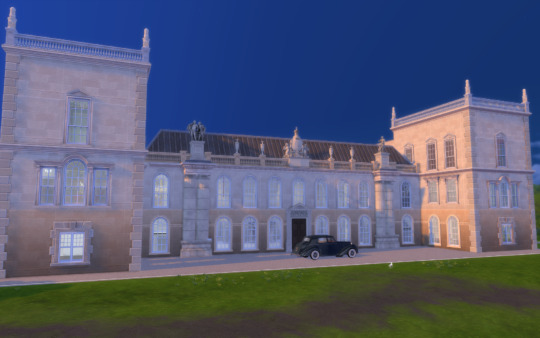
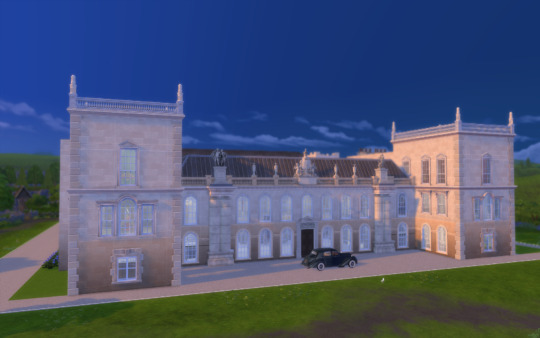
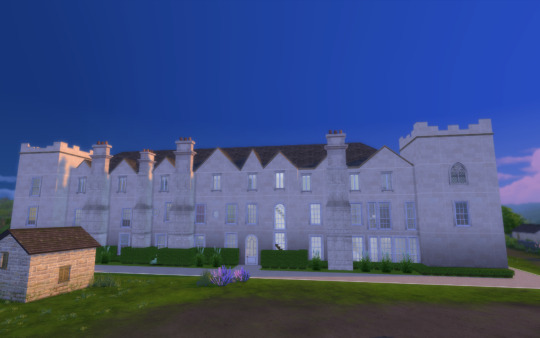
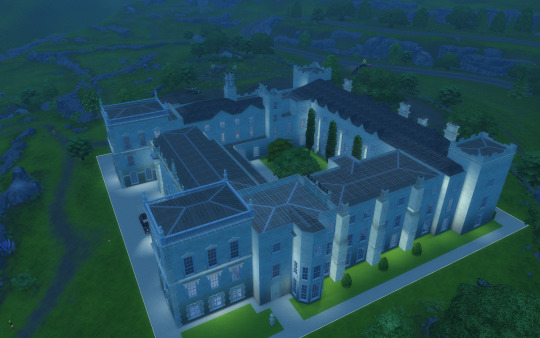
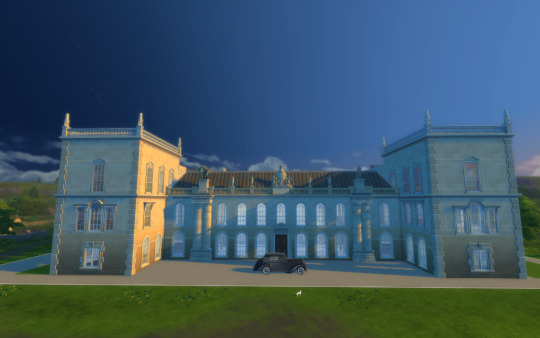
DOWNLOAD (Early acces: June 30) https://www.patreon.com/posts/grimsthorpe-101891128
#sims 4 architecture#sims 4 build#sims4#sims4play#sims 4 screenshots#sims 4 historical#sims4building#sims4palace#sims 4 royalty#ts4 download#ts4#ts4 gameplay#ts4 simblr#ts4cc#ts4 legacy#sims 4 gameplay#sims 4 legacy#sims 4 cc#thesims4#sims 4#the sims 4#sims 4 aesthetic#ts4 cc#english manor
35 notes
·
View notes